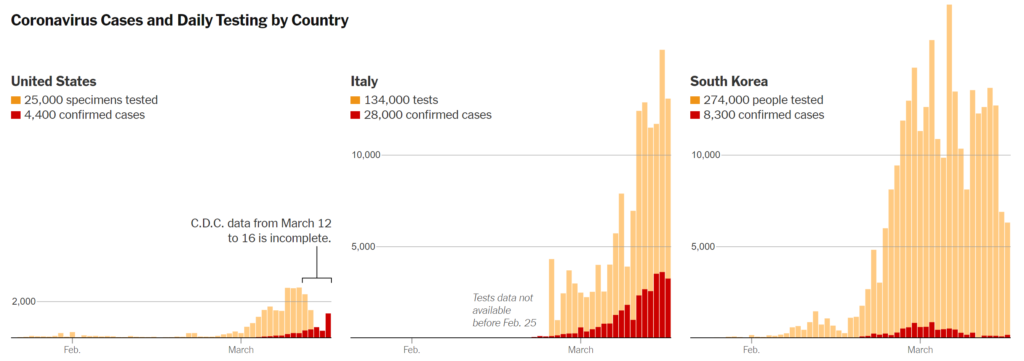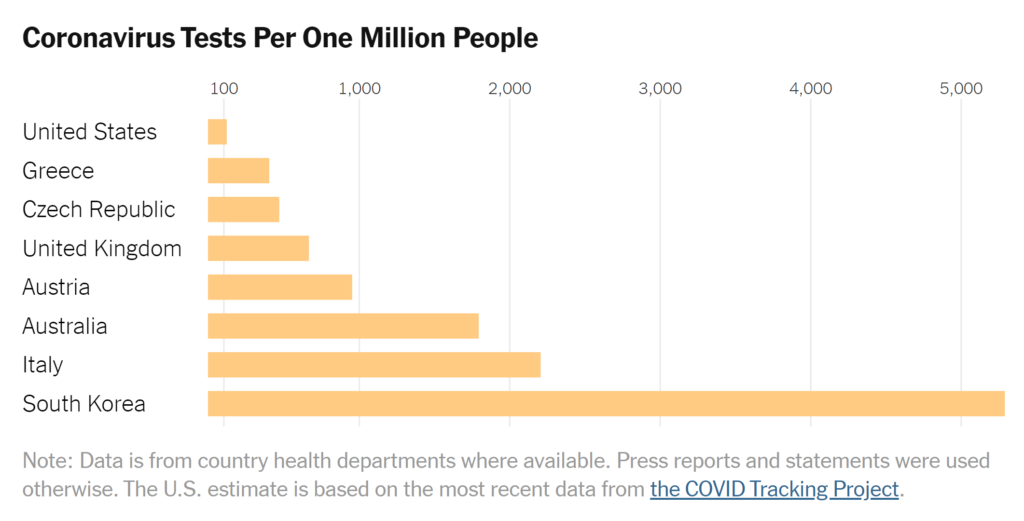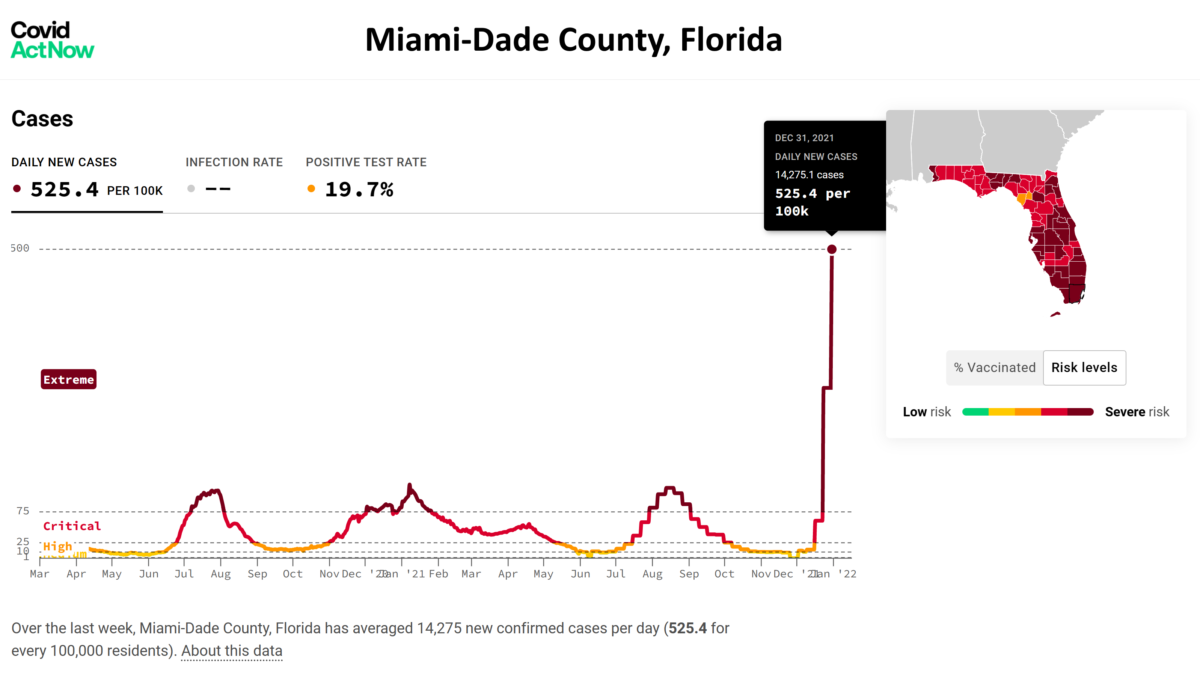U.S. lags in coronavirus testing after slow response to outbreak

By Larry Buchanan, K.K. Rebecca Lai, and Allison McCann
17 March 2020
(The New York Times) – Coronavirus testing data has been spotty and not easily available, especially in the United States. Based on official government sources, here’s how testing efforts in the United States compare with those in Italy and South Korea.
Delays in testing in the United States have set back the nation’s response to the pandemic, even though its first case was discovered around the same time that South Korea’s was. But part of the problem in the United States has also been gaps created by the way the state and federal agencies report the data.
An internet community effort, called the COVID Tracking Project, is attempting to provide a fuller picture of testing in the United States. According to the tracker — which collects information directly from state health departments, local news reports and live news conferences — at least 41,000 people have been tested in the United States, much higher than official C.D.C. figures.

It has been difficult to track reliable testing data in the United States for a number of reasons. Data from the Centers for Disease Control, which lags several days, reports the number of specimens tested, not the number of people — multiple specimens can be tested from each person. And some states report only positive results, not negative ones, making it hard to know the total number tested.
The COVID Tracking Project’s data, however, lays bare just how behind the United States has been in responding to the pandemic, which by Monday night had sickened more than 178,000 people worldwide, according to official accounts.
Recent data shows that about 125 people per million have been tested in the United States — far fewer than most other countries where data is available. [more]
U.S. Lags in Coronavirus Testing After Slow Response to Outbreak

